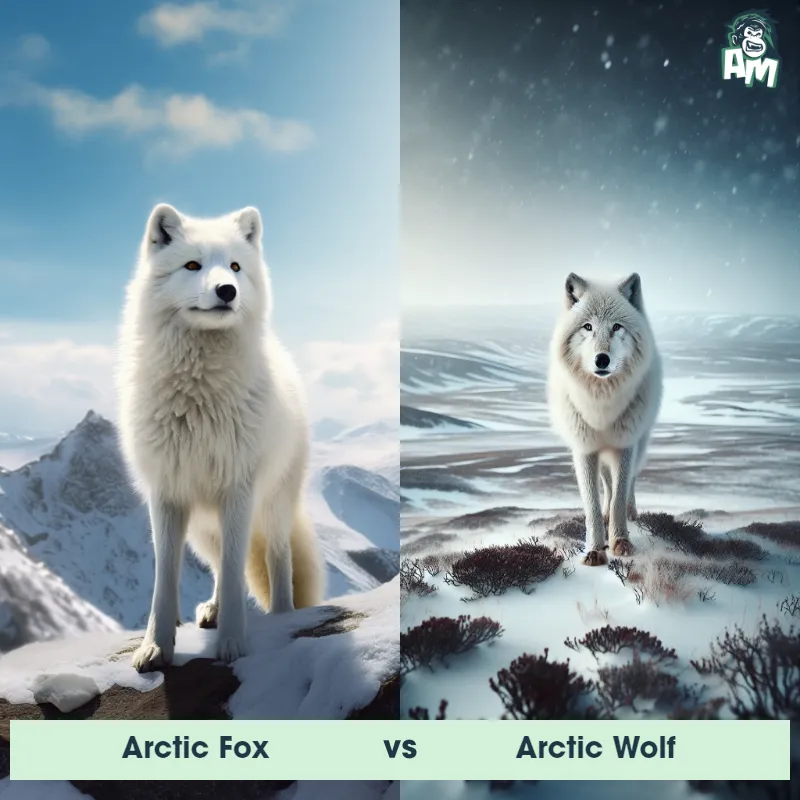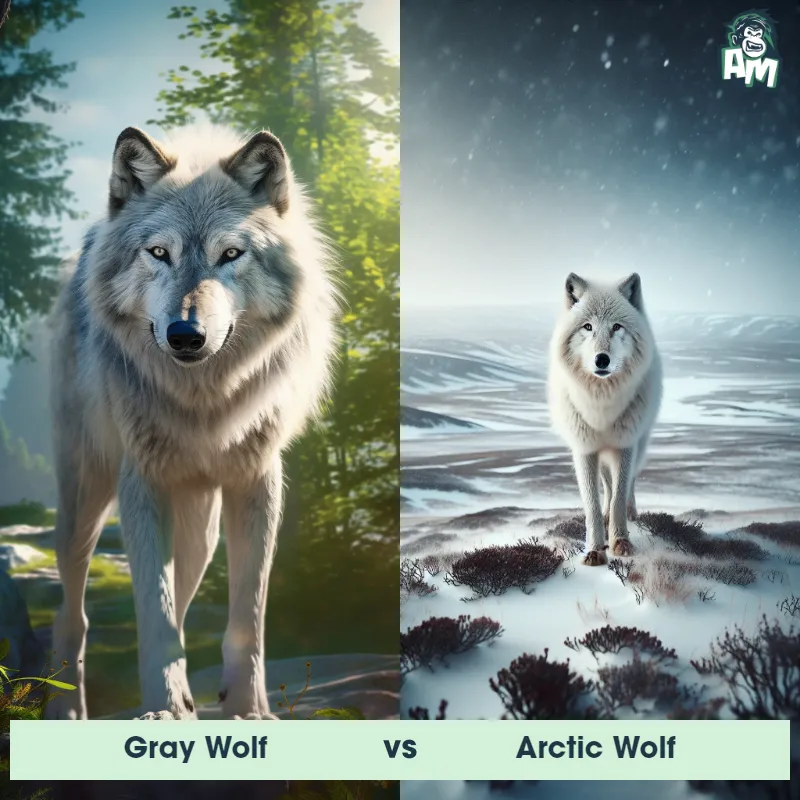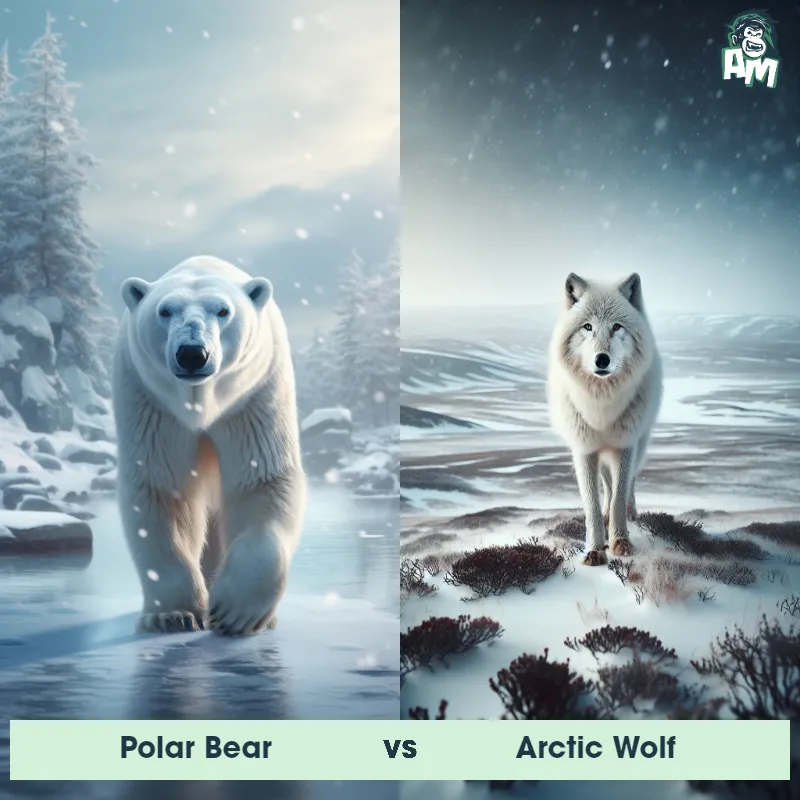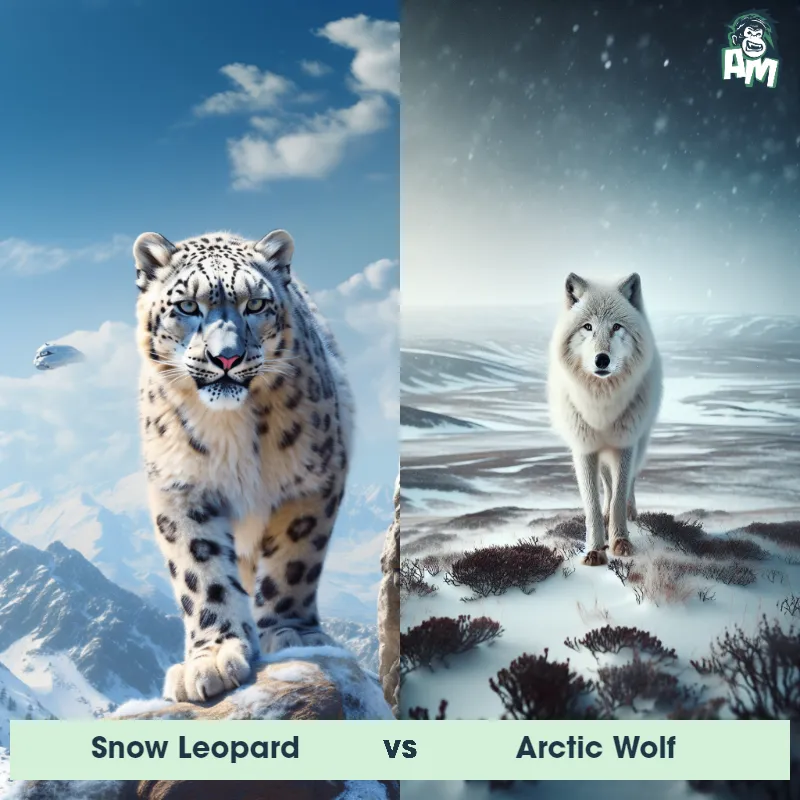The Arctic Wolf
The Arctic Wolf, also known as the White Wolf, is a majestic creature native to the Arctic regions of North America and Greenland. It showcases a thick, double-layered white fur coat that helps it blend perfectly into its snowy surroundings. With a height of around two to three feet at the shoulder and a weight of 70 to 150 pounds, it possesses a sturdy build ideal for its harsh habitat. These wolves have excellent hearing and sense of smell, enabling them to locate prey easily and communicate with pack members effectively.
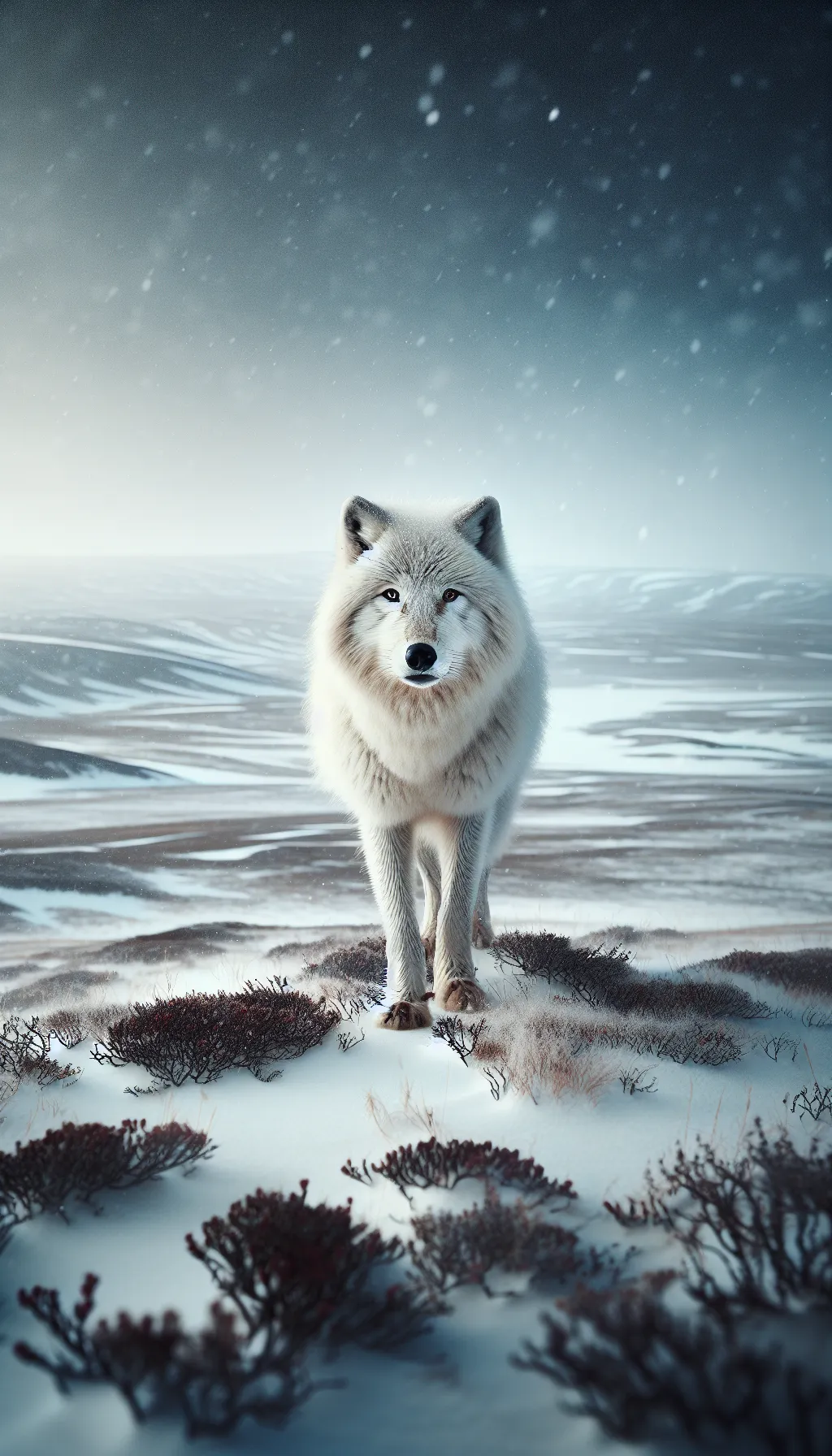
| Arctic Wolf | |
|---|---|
| Size | Height: Up to 30 inches (76 cm) / Length: Up to 5 feet (1.5 meters) |
| Weight | 75-100 pounds (34-45 kilograms) |
| Speed | 46mph (74km/h) |
| Key Strength | Strong bite force and endurance |
| Biggest Weakness | Less aggressive compared to other wolves |
| Scientific Name | Canis lupus arctos |
| Family | Canidae |
| Habitat | Tundra and Arctic regions |
| Geography | North America and Greenland |
| Diet | Carnivorous, mainly preying on musk oxen, Arctic hares, and caribou. |
| Lifespan | 12 years - 18 years |

The Arctic Wolf
The Arctic Wolf, also known as the White Wolf, is a majestic creature native to the Arctic regions of North America and Greenland. It showcases a thick, double-layered white fur coat that helps it blend perfectly into its snowy surroundings. With a height of around two to three feet at the shoulder and a weight of 70 to 150 pounds, it possesses a sturdy build ideal for its harsh habitat. These wolves have excellent hearing and sense of smell, enabling them to locate prey easily and communicate with pack members effectively.
Fun Fact: Arctic Wolves have an incredible sense of smell that allows them to detect prey buried under three feet of snow, even from a distance of more than a mile.
| Arctic Wolf | |
|---|---|
| Size | Height: Up to 30 inches (76 cm) / Length: Up to 5 feet (1.5 meters) |
| Weight | 75-100 pounds (34-45 kilograms) |
| Speed | 46mph (74km/h) |
| Key Strength | Strong bite force and endurance |
| Biggest Weakness | Less aggressive compared to other wolves |
| Scientific Name | Canis lupus arctos |
| Family | Canidae |
| Habitat | Tundra and Arctic regions |
| Geography | North America and Greenland |
| Diet | Carnivorous, mainly preying on musk oxen, Arctic hares, and caribou. |
| Lifespan | 12 years - 18 years |
Arctic Wolf Matchups
We use AI to simulate matchups between the Arctic Wolf and other animals. Our simulation considers size, strength, and natural predatory behaviors to determine the most likely outcome.

Can't find the Matchup you want?
Create Your Own MatchupArctic Wolf: Diet, Predators, Aggression, and Defensive Behaviors
What do Arctic Wolves eat?
Arctic wolves primarily feed on musk oxen, Arctic hares, caribou, and other small mammals found in their habitat. They are also known to scavenge on carcasses left behind by larger predators like polar bears.
Do Arctic Wolves have any predators?
The main predators of Arctic wolves are polar bears and humans. Polar bears are known to hunt and prey on Arctic wolves, especially when their primary food sources are scarce. Humans also pose a threat through hunting and habitat destruction.
Are Arctic Wolves aggressive?
Arctic wolves are not typically aggressive towards humans unless provoked or threatened. However, they can be aggressive towards other predators when defending their territory or young.
Do Arctic Wolves fight with each other?
Arctic wolves are social animals that live in packs, and conflicts within the pack can arise over hierarchy and mating rights. These conflicts can sometimes lead to physical fights among pack members, but they are usually resolved without serious injuries.
How do Arctic Wolves defend themselves?
Arctic wolves have several defense mechanisms to protect themselves from threats. They use their keen sense of smell and hearing to detect predators from a distance, and their pack mentality allows them to work together to ward off threats. In addition, their speed and agility help them evade danger when necessary.
What is the biggest weakness of Arctic Wolves in a fight?
The biggest weakness of Arctic wolves in a fight is their relatively smaller size compared to some of their potential predators, such as polar bears. While their pack mentality and agility can provide some defense, they may struggle against larger, more powerful foes in a physical confrontation.
Fun Fact: The Arctic Wolf is a highly adaptable predator, with a diet that mainly consists of musk oxen, Arctic Hares, Caribou, and seals. However, when food sources are scarce, they are also known to eat berries and small rodents.
Fun Fact: Arctic Wolves have a unique way of defending themselves against extremely low temperatures. They have a specialized blood circulatory system that helps keep their paws warm by conserving heat and preventing frostbite, allowing them to travel for long distances across the frozen tundra.



